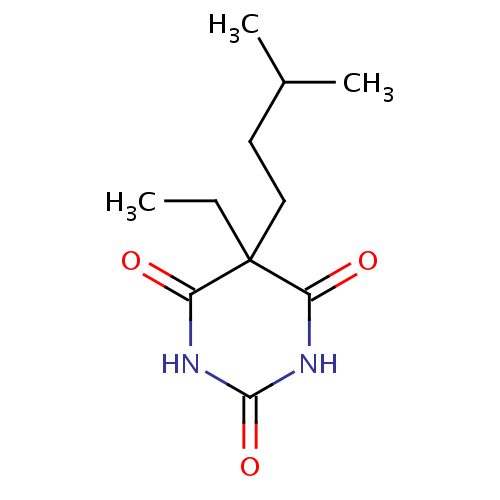| Indication | Not Available |
| Pharmacodynamics | Not Available |
| Mechanism of action | Amobarbital (like all barbiturates) works by binding to the GABAA receptor at either the alpha or the beta sub unit. These are binding sites that are distinct from GABA itself and also distinct from the benzodiazepine binding site. Like benzodiazepines, barbiturates potentiate the effect of GABA at this receptor. This GABAA receptor binding decreases input resistance, depresses burst and tonic firing, especially in ventrobasal and intralaminar neurons, while at the same time increasing burst duration and mean conductance at individual chloride channels; this increases both the amplitude and decay time of inhibitory postsynaptic currents. In addition to this GABA-ergic effect, barbiturates also block the AMPA receptor, a subtype of glutamate receptor. Glutamate is the principal excitatory neurotransmitter in the mammalian CNS. Amobarbital also appears to bind neuronal nicotinic acetylcholine receptors. |
| Absorption | Not Available |
| Volume of distribution | Not Available |
| Protein binding | Not Available |
| Metabolism | Not Available |
| Route of elimination | Not Available |
| Half life | Not Available |
| Clearance | Not Available |
| Toxicity | Not Available |
Saturday, October 13, 2012
Pharmacology Of Amobarbital
Labels:
Pharmacology of Drugs,
UNCLASSIFIED
Subscribe to:
Post Comments (Atom)

No comments:
Post a Comment